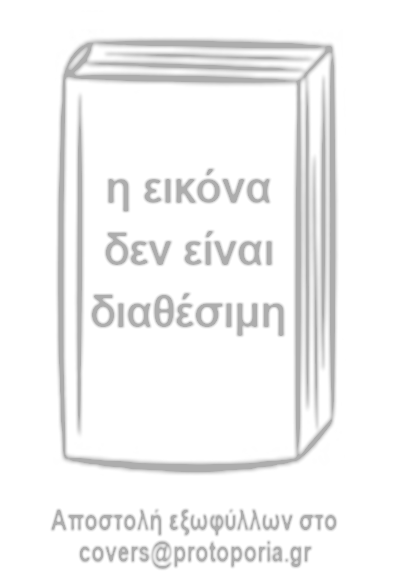0
Your Καλαθι
Το Φως του Κόσμου
Μια ζωγραφική παραμυθία με ιστορημένους αγίους του Αγίου Όρους
Έκπτωση
20%

20%

Περιγραφή
Αντικρύζοντας τα έργα του Κόρδη, καθίσταται σαφές πως το χρώμα αποτελεί θεμελιώδες στοιχείο της τέχνης του. Αγαπά το χρώμα και η τεχνική του να αναμειγνύει ένα φάσμα αποχρώσεων από τρία ή τέσσερα μόνο χρώματα δίνει ένα αποτέλεσμα αντίστοιχο των απαλών, τριτογενών τόνων που χαρακτηρίζουν τις πιο εκλεπτυσμένες φάσεις της Βυζαντινής τέχνης. Αλλά το χρώμα δεν είναι μόνο μια εντύπωση αλλά θεμελιώδες στοιχείο. Γεμίζει την επιφάνεια της εικόνας με ένα βάθος που δεν μπορεί να οριστεί στον χώρο αλλά που ανταποκρίνεται στην οπτική μας, είναι δε τόσο ζωντανό όσο οι περίκλειστες με χρυσό εικόνες του παρελθόντος. Μπροστά σε αυτό το βάθος, οι αναπαριστώμενες μορφές είναι κι αυτές όλο χρώμα όπως λέει ο Κόρδης, "Οι Βυζαντινές μορφές είναι χρώμα, δεν έχουν απλά χρώμα". Οι Βυζαντινοί το καταλάβαιναν αυτό, όπως φαίνεται από τα λόγια του Νικολάου της Αντίντης: "...υπάρχει μια τρίτη επιβεβαίωση πως [όσα λαμβάνουν χώρα στη Λειτουργία] αντιπροσωπεύουν και το σύνολο του ερχομού και της οικονομίας Του για εμάς... Ποιο είναι αυτό; Είναι η ανύψωση των αγίων εικόνων μέσω του χρώματος".
Τα χρώματα είναι η ουσία των εικόνων. Επειδή τα χρώματα συχνά φωτίζονται, οι ιστορικοί τέχνης έχουν πει πως το Βυζάντιο χρησιμοποιεί το φως σαν χρώμα. Αλλά το φως τροποποιεί τη φόρμα - το χρώμα είναι αυτό που τη διαμορφώνει, ξεκινώντας από τον προπλασμό. [...]
Annemarie Weyl Carr, Διακεκριμένη Ομότιμη Καθηγήτρια Ιστορίας της Τέχνης
(απόσπασμα από το βιβλίο)
It is clear, on confronting Kordis' paintings, that color is fundamental to his art. He loves color, and his technique of mixing a spectrum of hues from just three or four pigments produces effects akin to the tender, tertiary tones that characterize the most sophisticated phases of Byzantine art. But color is not just effect; it is foundational. It fills the picture surface with a spatially indeterminate but visually responsive ground as alive the gold-ground icons of the past. Against this, the representational forms, too, are all color-as Kordis says, "Byzantine forms are color; they don't just have color." Byzantine viewers understood this, as is seen in the words of Nikolaos of Andida that: "...there is a third confirmation that [the things which are accomplished in the Liturgy] also represent the whole of His saving coming and economy for us... What is it? It is the erection of the holy images by means of colors."
Colors are the substance of images. Because the colors are frequently highlighted, art historians have said that Byzantium uses light as color.9 But light modifies form; it is color that establishes it, from the proplasmos up.
(Annemarie Weyl Carr, from the publisher)
Τα χρώματα είναι η ουσία των εικόνων. Επειδή τα χρώματα συχνά φωτίζονται, οι ιστορικοί τέχνης έχουν πει πως το Βυζάντιο χρησιμοποιεί το φως σαν χρώμα. Αλλά το φως τροποποιεί τη φόρμα - το χρώμα είναι αυτό που τη διαμορφώνει, ξεκινώντας από τον προπλασμό. [...]
Annemarie Weyl Carr, Διακεκριμένη Ομότιμη Καθηγήτρια Ιστορίας της Τέχνης
(απόσπασμα από το βιβλίο)
It is clear, on confronting Kordis' paintings, that color is fundamental to his art. He loves color, and his technique of mixing a spectrum of hues from just three or four pigments produces effects akin to the tender, tertiary tones that characterize the most sophisticated phases of Byzantine art. But color is not just effect; it is foundational. It fills the picture surface with a spatially indeterminate but visually responsive ground as alive the gold-ground icons of the past. Against this, the representational forms, too, are all color-as Kordis says, "Byzantine forms are color; they don't just have color." Byzantine viewers understood this, as is seen in the words of Nikolaos of Andida that: "...there is a third confirmation that [the things which are accomplished in the Liturgy] also represent the whole of His saving coming and economy for us... What is it? It is the erection of the holy images by means of colors."
Colors are the substance of images. Because the colors are frequently highlighted, art historians have said that Byzantium uses light as color.9 But light modifies form; it is color that establishes it, from the proplasmos up.
(Annemarie Weyl Carr, from the publisher)
Κριτικές
Δεν βρέθηκαν δημοσιεύσεις




